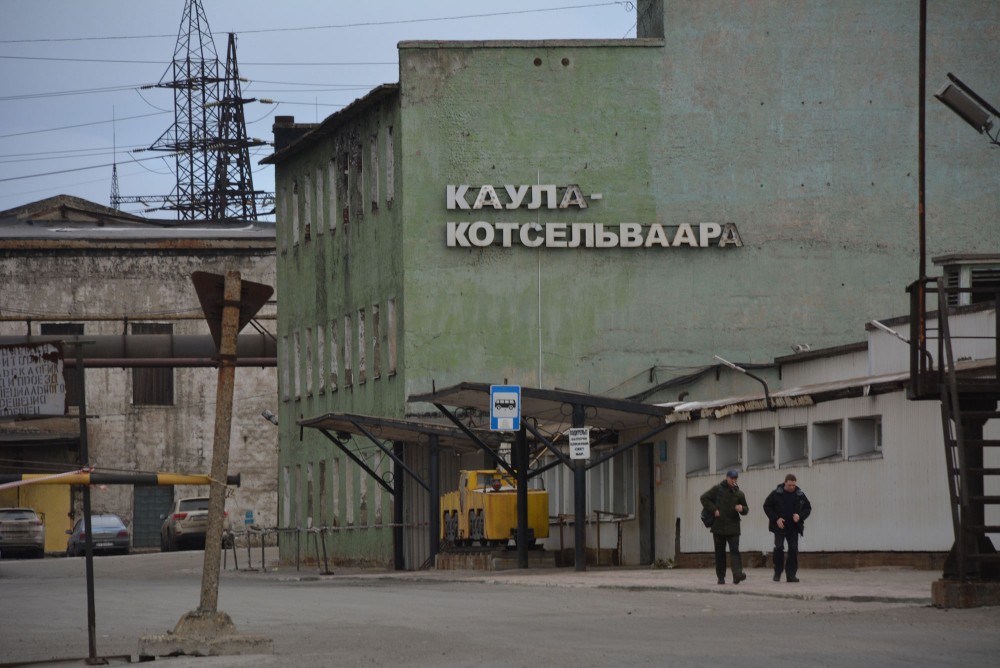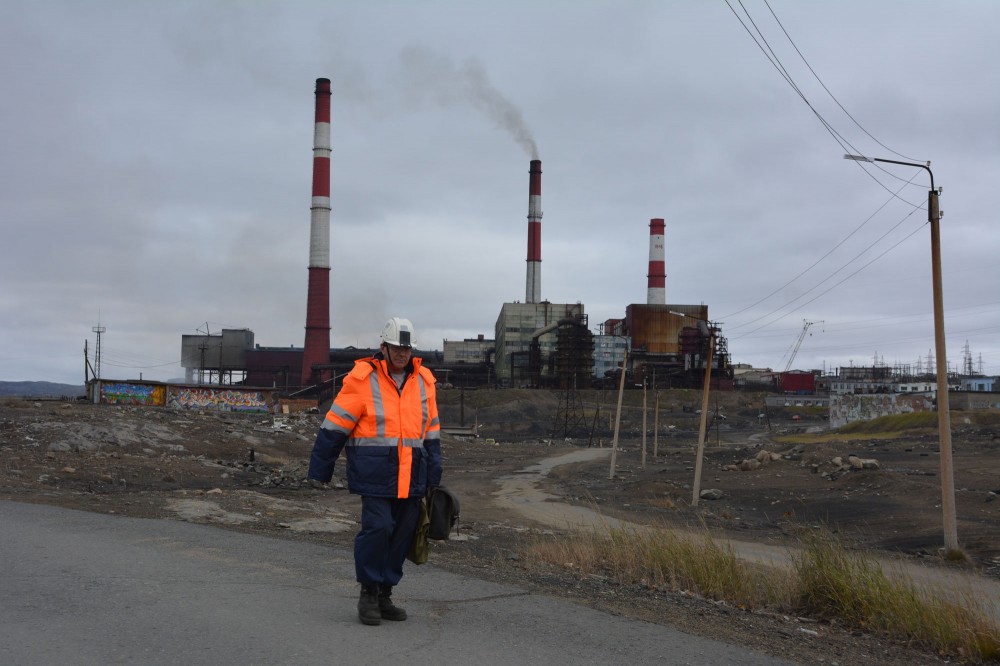More 80 years after Finns found huge nickel and copper reserves in the Kaula-Kotselvaara deposit, the last remaining mine in the Russian border town of Nikel is closed.

The Kaula-Kotselvaara mine closes after more than 80 years of production.
Photo: Atle Staalesen
By Atle Staalesen
By Atle Staalesen
BARENTS OBSERVER
May 12, 2023
The town that in late 2020 closed its nickel smelter now loses another key industrial object. Nornickel, the mining and metallurgy company, in April confirmed that it is closing the Kaula-Kotselvaara mine.
It is the last remaining mine in what was once a thriving mining and metallurgy town. At most, the population in Nikel exceeded 20,000.
In the 1980s, the town became internationally known for its serious pollution that affected the vulnerable Arctic lands also in neighbouring Norway.
According to Ruslan Ilyasov, director for personnel and social policy at Nornickel’s regional subsidiary Kola GMK, the miners and equipment of the Kaula-Kotselvaara will be transferred to Severny mine in the neighboring town of Zapolyarny. It is all part of the company’s efforts to “alter the configuration” of the mining capacities in the area, Ilyasov explains.

May 12, 2023
The town that in late 2020 closed its nickel smelter now loses another key industrial object. Nornickel, the mining and metallurgy company, in April confirmed that it is closing the Kaula-Kotselvaara mine.
It is the last remaining mine in what was once a thriving mining and metallurgy town. At most, the population in Nikel exceeded 20,000.
In the 1980s, the town became internationally known for its serious pollution that affected the vulnerable Arctic lands also in neighbouring Norway.
According to Ruslan Ilyasov, director for personnel and social policy at Nornickel’s regional subsidiary Kola GMK, the miners and equipment of the Kaula-Kotselvaara will be transferred to Severny mine in the neighboring town of Zapolyarny. It is all part of the company’s efforts to “alter the configuration” of the mining capacities in the area, Ilyasov explains.

No more industry jobs for the workers of Nikel. The nickel smelter closed in 2020.
Photo: Atle Staalesen
Workers will also be offered training and re-education for other jobs in the company, he says to local media.
Nornickel is in the process of expanding its Severny mine in Zapolyarny and there is reportedly a significant demand for additional miners.
Over the next months, about 200 men will be engaged in closure and conservation of the Kaula-Kotselvaara. After that, the premises will be abandoned.
Locals fear that Nikel now turns into a full-out ghost town.
“First they closed the plant, and now they close the mine. The town will be left without any production facilities, and where there is no production there will be no point in having a service sector,” a local social media resource reports.
Mining output at the Kaula-Kotselvaara has gradually shrunk over the years and is believed to have amounted to less than 700,000 tons of ore per year before the closure. There is still reserves in the area, but the miners will have to dig 200 meter deeper into the ground to access them, according to a local information resource.
The local ore reserves in the area were discovered by Finnish geologists in the 1920s, and development of the Kaula-Kotselvaara and adjacent processing facilities and electricity supply was started in the mid-1930s.
The town that by the Finns was called Kolosjoki was conquered by German troops in 1941 and nickel from Kaula-Kotselvaara subsequently became of great importance for Hitler and his weapon industry.
Following the 2WW, the town and surrounding Petsamo area was seized by the USSR, and mining resumed after 1945.
Workers will also be offered training and re-education for other jobs in the company, he says to local media.
Nornickel is in the process of expanding its Severny mine in Zapolyarny and there is reportedly a significant demand for additional miners.
Over the next months, about 200 men will be engaged in closure and conservation of the Kaula-Kotselvaara. After that, the premises will be abandoned.
Locals fear that Nikel now turns into a full-out ghost town.
“First they closed the plant, and now they close the mine. The town will be left without any production facilities, and where there is no production there will be no point in having a service sector,” a local social media resource reports.
Mining output at the Kaula-Kotselvaara has gradually shrunk over the years and is believed to have amounted to less than 700,000 tons of ore per year before the closure. There is still reserves in the area, but the miners will have to dig 200 meter deeper into the ground to access them, according to a local information resource.
The local ore reserves in the area were discovered by Finnish geologists in the 1920s, and development of the Kaula-Kotselvaara and adjacent processing facilities and electricity supply was started in the mid-1930s.
The town that by the Finns was called Kolosjoki was conquered by German troops in 1941 and nickel from Kaula-Kotselvaara subsequently became of great importance for Hitler and his weapon industry.
Following the 2WW, the town and surrounding Petsamo area was seized by the USSR, and mining resumed after 1945.
No comments:
Post a Comment